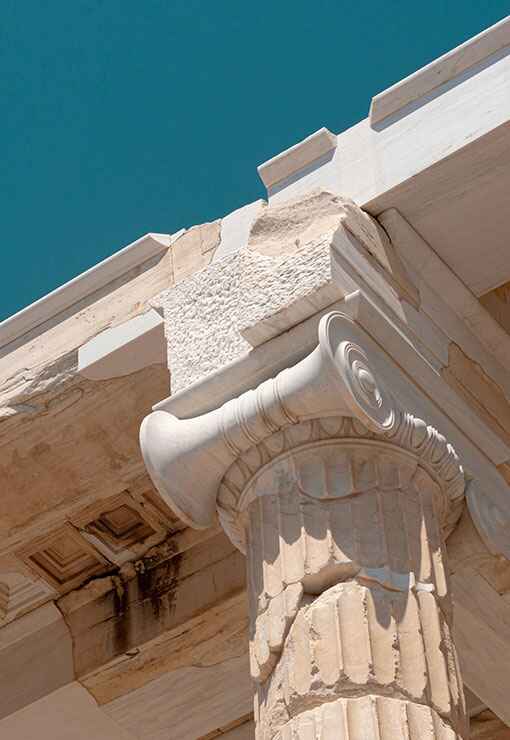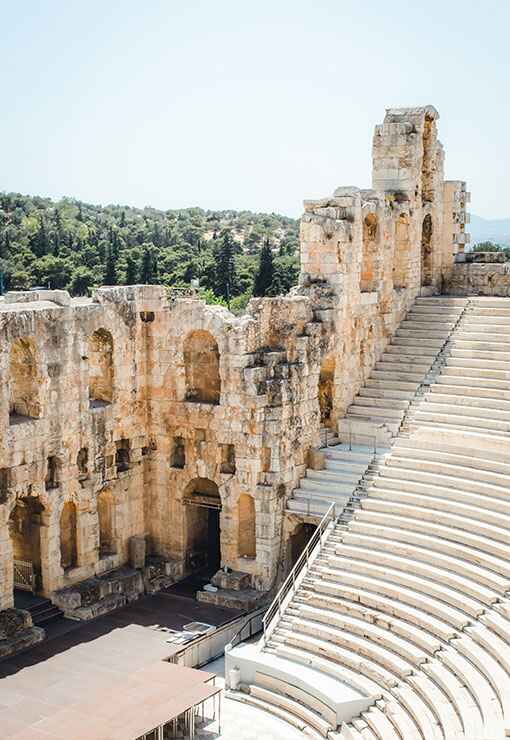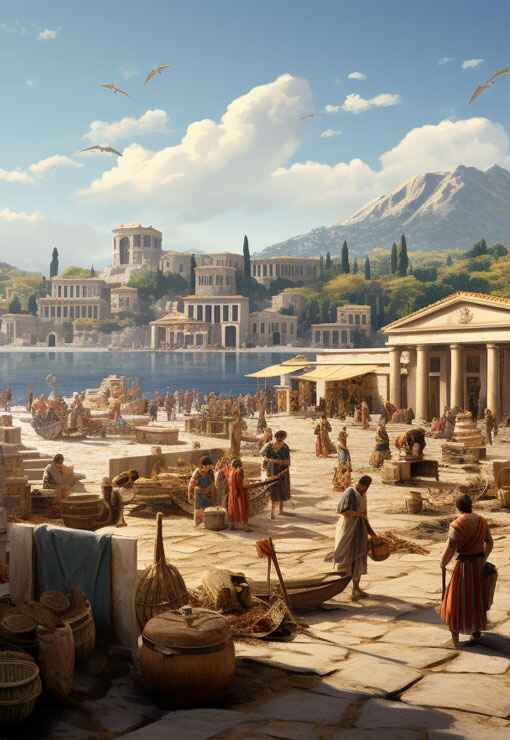

Ancient Greek architectural styles are renowned for their harmony, proportion, and aesthetic beauty, influencing Western architecture for centuries. These styles evolved over time, reflecting the cultural, religious, and political developments of ancient Greece and setting the foundation for classical architecture.
Doric Order: The Doric order is the oldest and simplest of the three Greek architectural orders. Characterized by sturdy, fluted columns with no base and a plain, cushion-like capital called the echinus, Doric columns supported the entablature (architrave, frieze, and cornice) and the roof. The Parthenon in Athens is a quintessential example of Doric architecture, showcasing its robust and dignified appearance.
Ionic Order: The Ionic order developed later and is distinguished by its slender, fluted columns with decorated bases and capitals adorned with volutes (scroll-like shapes). The entablature of the Ionic order is more ornate than the Doric, featuring a continuous frieze often embellished with relief sculpture. The Erechtheion on the Acropolis of Athens exemplifies Ionic architecture, notable for its graceful and elegant design.
Corinthian Order: The Corinthian order is the most elaborate and decorative of the Greek orders, characterized by slender, fluted columns topped with capitals adorned with acanthus leaves and small scrolls. The Corinthian order is considered more decorative and feminine in comparison to the Doric and Ionic orders. The Temple of Olympian Zeus in Athens features Corinthian columns, highlighting its ornate and intricate design.
Architectural Elements: Greek architecture included various elements that contributed to its distinct style. These elements include pediments (triangular gables) adorned with sculptural decoration, metopes (spaces between triglyphs on a Doric frieze) often featuring relief sculpture depicting mythological scenes or battles, and continuous friezes displaying a procession of figures or narrative scenes.
Architectural Innovations: Greek architects introduced several innovations that influenced architectural practices in subsequent eras. These innovations include the use of entasis (subtle swelling) in columns to counteract the optical illusion of concavity, creating an impression of straightness; the development of the classical orders as a system of proportion and harmony; and the refinement of temple plans and construction techniques to achieve greater architectural perfection.
Impact and Legacy: Ancient Greek architectural styles have had a profound impact on Western architecture and continue to inspire architects, artists, and scholars. The principles of proportion, harmony, and the use of classical orders are fundamental to classical architecture and have been revived and adapted throughout history. Greek architecture not only served practical and religious purposes but also embodied the ideals of beauty, rationality, and cultural identity in ancient Greek society.

The Parthenon, dedicated to Athena, is considered one of the greatest achievements of ancient Greek architecture. Built in the Doric order, it embodies the principles of symmetry, proportion, and architectural refinement, making it a symbol of classical ideals and artistic excellence.
Ancient Greek art and architecture, with its harmonious proportions and timeless elegance, continue to inspire awe and admiration millennia later.
Discover
Greek mythology, a rich tapestry of gods, heroes, and mythical creatures, captivates the imagination with its tales of love, betrayal, and epic adventures that delve into the depths of the human psyche.
Discover
Ancient Greek history, marked by remarkable achievements in democracy, philosophy, and warfare, shaped the foundation of Western civilization, leaving an indelible legacy of innovation and cultural influence that continues to resonate to this day.
Discover
The ancient Greek Olympics, held in Olympia every four years, celebrated athleticism, unity, and cultural pride, serving as a testament to the enduring spirit of competition and excellence that transcends time and borders.
Discover
Ancient Greek wars, such as the Persian Wars and the Peloponnesian War, were pivotal conflicts that shaped the course of history, highlighting the struggle for power, independence, and the clash of civilizations in the ancient Mediterranean world.
Discover
Ancient Greek culture and society, characterized by its emphasis on art, philosophy, and civic engagement, fostered a vibrant intellectual and social landscape where innovation flourished, democracy thrived, and the pursuit of knowledge and excellence was celebrated as fundamental values of civilized life.
Discover
Find out more about ancientgreece.com